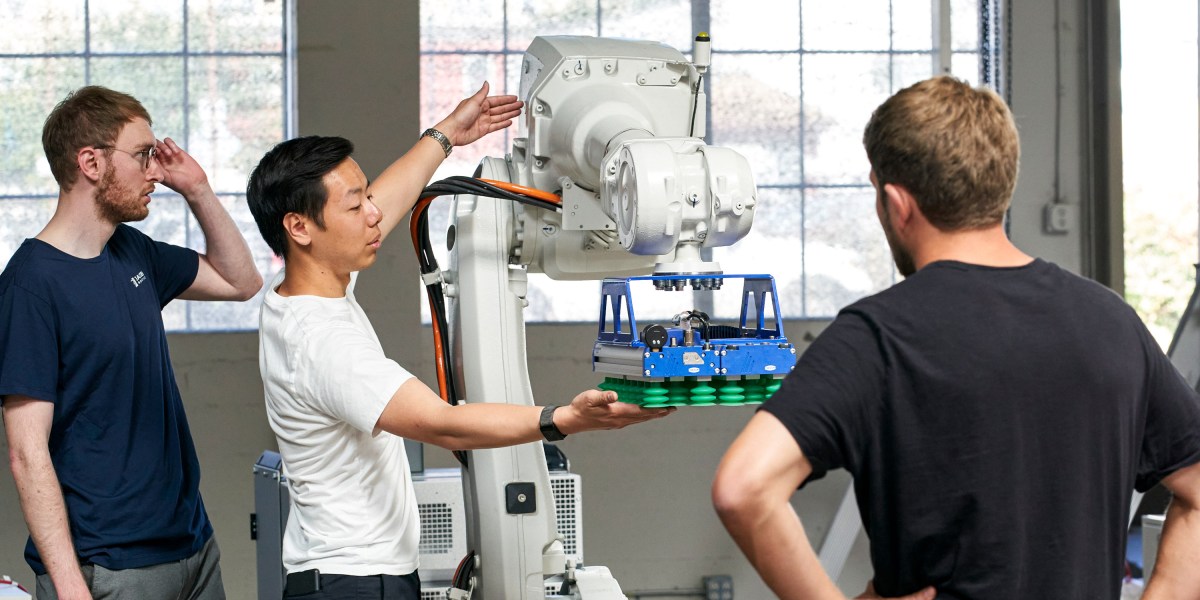Before almost any item reaches your door, it traverses the global supply chain on a pallet. More than 2 billion pallets are in circulation in the United States alone, and $400 billion worth of goods are exported on them annually.
However, loading boxes onto these pallets is a task stuck in the past: Heavy loads and repetitive movements leave workers at high risk of injury, and in the rare instances when robots are used, they take months to program using handheld computers that have changed little since the 1980s.
Jacobi Robotics, a startup spun out of the labs of the University of California, Berkeley, says it can vastly speed up that process with AI. If successful, Jacobi aims to replace the legacy methods customers are currently using to train their bots, whittling down the time it takes to code a paletting process from months to a single day. Read the full story.
—James O’Donnell
Here’s the problem with new plastic recycling methods
Look on the bottom of a plastic water bottle or takeout container, and you might find a logo there made up of three arrows forming a closed loop shaped like a triangle. Sometimes called the chasing arrows, this stamp is used on packaging to suggest it’s recyclable.
Those little arrows imply a nice story, painting a picture of a world where the material will be recycled into a new product, forming an endless loop of reuse. But the reality of plastics recycling today doesn’t match up to that idea. Only about 10% of the plastic ever made has been recycled; the vast majority winds up in landfills or in the environment.
Researchers have been working to address the problem by coming up with new recycling methods, sometimes called advanced, or chemical, recycling. But this new approach shares a few challenges with other recycling methods. Read the full story.
—Casey Crownhart

